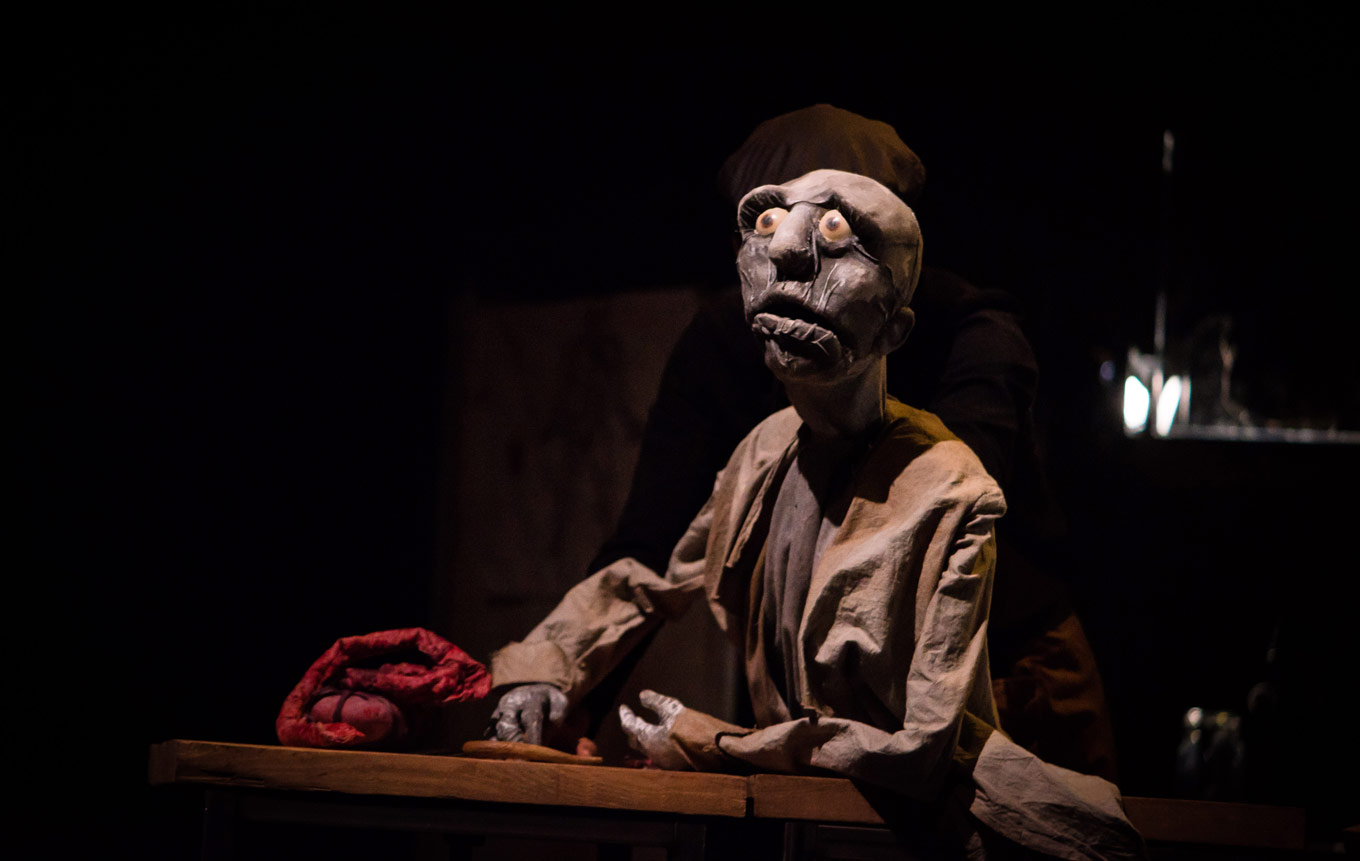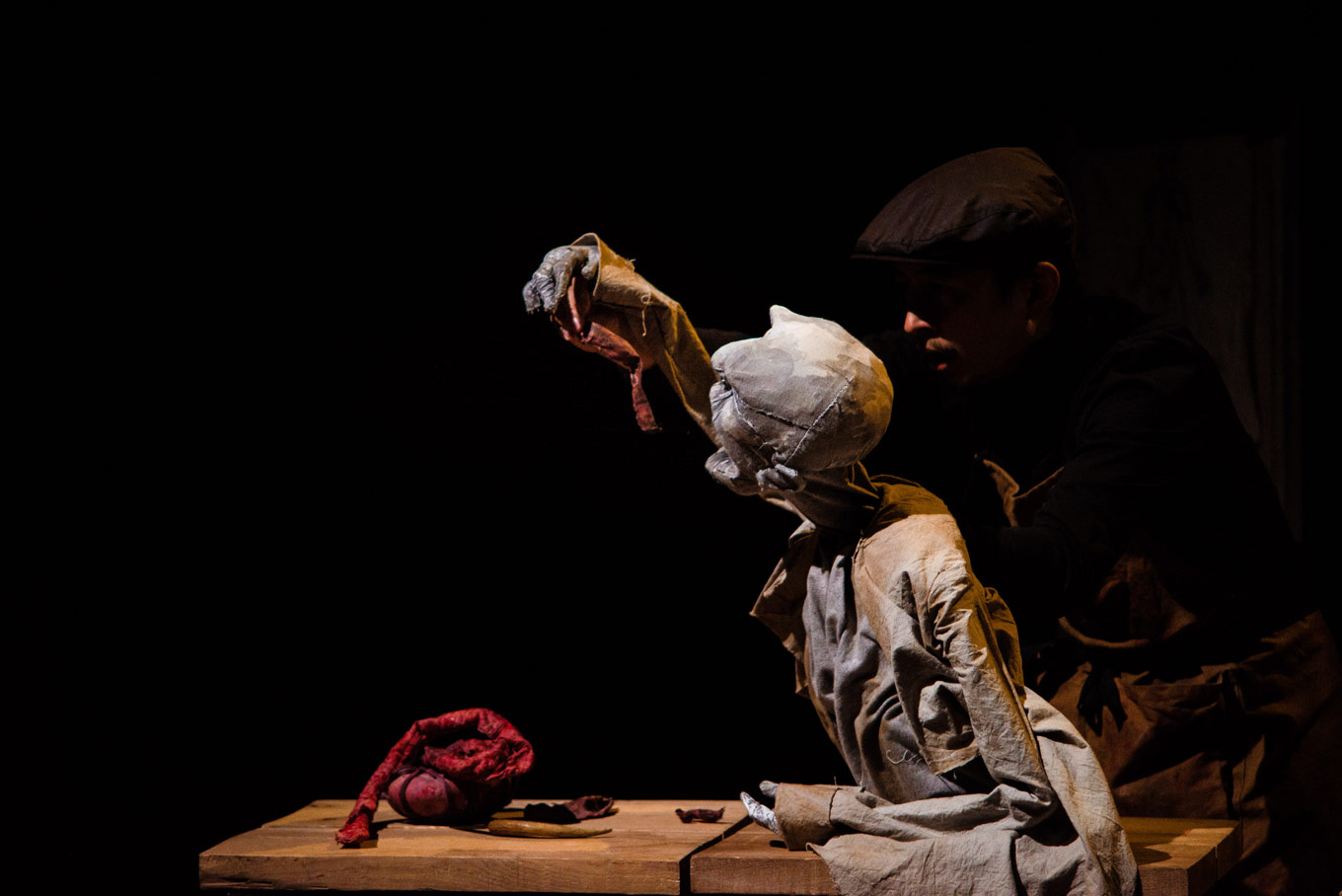
Tarrare the Freak: "I just want to be full."
ReviewIt seems an obvious thing in hindsight, but grown-ups really love puppets. Or so is the fairly-drawn conclusion, based on the laughs, gasps, and audible emotional investment in the audience as they took in Wattle & Daub’s production of The Depraved Appetite of Tarrare the Freak.
The story is based on the real-yet-unbelievable life of Tarrare, the 18th-century Frenchman. He was a diagnosed polyphagist, known for eating huge quantities of food (or wine corks, stones, live animals, etc.), a skill he put to use as a street performer and with a touring group of “freaks”. His odd and fascinating life included time spent as a spy for the French Revolutionary Army, hopsital stays after foraging through dung heaps and drinking barrels of grease to satisfy his hunger, an accusation of infanticide (he was suspected of eating a toddler), and an ugly death from tuberculosis and exudative diarrhea. Yikes.

The subtitle for Tom and Tobi Poster’s Tarrare the Freak is “a monstrous chamber opera for puppets.” The description is apt; Bristol-based puppetry theatre company Wattle & Daub proves that just because a show has puppets in it does not mean it’s child-friendly. The terrifying puppets, designed by Laura Purcell-Gates, Tobi Poster and Emma Powell, seemed corpse-like, true “freaks” from another world. While most characters had faces dominated by dark, sunken eye sockets, Tarrare himself had wide, bright eyes that seemed aghast at the world around him (and rightly so).
Puppeteers Tobi Poster and Aya Nakamura were extraordinary. The floating, legless puppet characters were enlivened, true personalities emanating out of the careful design. They were the regretful, well-intentioned (?) Baron Percy bemoaning his failure to cure Tarrare; they were a terrifying pair of conjoined twins, one of whom had fallen for the Freak; they were French Revolutionists, German soldiers, and obese babies. Singers Michael Longden and Daniel Harlock voiced all of these characters brilliantly (both deserving a big nod for their skills in falsetto singing), stepping in to assist in puppeteering and set changes.
Why, in the time of CGI and robots, do puppets still retain their magic? The simple answer lies in the puppetry skills of Poster and Nakamura, who pushed their audience to laughter and disgust and pity. Yet the secret seems to lie in the transparency of the art form. The puppeteers were always visible; every set change was done nakedly, the audience in on all the tricks. Instead of spoiling the illusion, it added a second layer of wonder; not only was this story enthralling, but these artists were creating it with extraordinary imagination.

Every moment had our eyes popping, from the floating-head-love-aria by Celeste (one of the conjoined twins), to the wordless scene of comedy-turned-tragedy between Tarrare and the toddler, to the hilarious chorus of German soldiers chanting, “Shit it out! Shit it out!” It could have been a show based solely on visual wows, yet there was a depth and empathy in the story that seemed to culminate in Tarrare’s line, “I don’t have dreams. I just want to be full.”
The Depraved Appetite of Tarrare the Freak plays at Wilton’s Music Hall until February 18, 2017, and if you’re in the London area, it’s a total must-see. For full details, ticket information, and more dates, click here.
The Depraved Appetite of Tarrare the Freak - showing at Tobacco Factory, Wilton's Music Hall and North Wall from Wattle & Daub Figure Theatre on Vimeo.


Comments